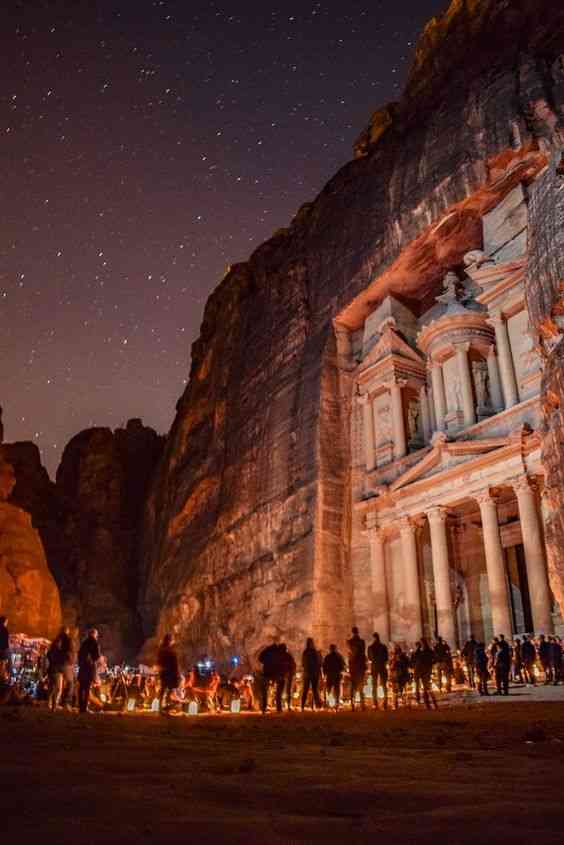The Arab capital of the Nabateans, and the most famous historical cities in Jordan and one of the seven new wonders of the world, carved into the rock in a stronghold between mountains, its discovery was delayed until the 19th century despite its historical importance and its transformation into one of the most important archaeological sites in the world.
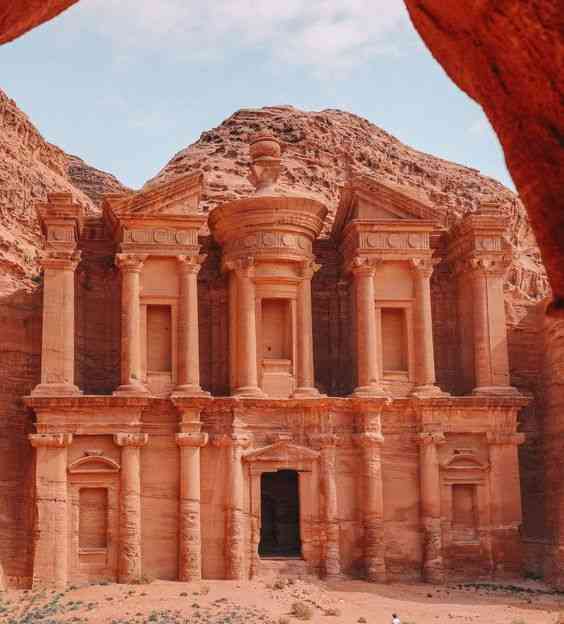
Location Petra is located in the heart of the southern desert of Jordan, 262 km south of the capital, Amman . It belongs administratively to the Wadi Musa Brigade in Ma'an Governorate, a city carved entirely of pink rock, and includes many historical sites.
It is naturally fortified and it can only be entered through the "Al-Saiq" road, which is a narrow road. The sunlight penetrates between its two high-rise edges.
The Al-Siq Road remained part of the secrets of the Pink City, as it crossed and the beauty of the rocks on its sides. This beauty is evident in the emergence of the "treasury", the most prominent and beautiful feature of Petra at the end of the "Siq".
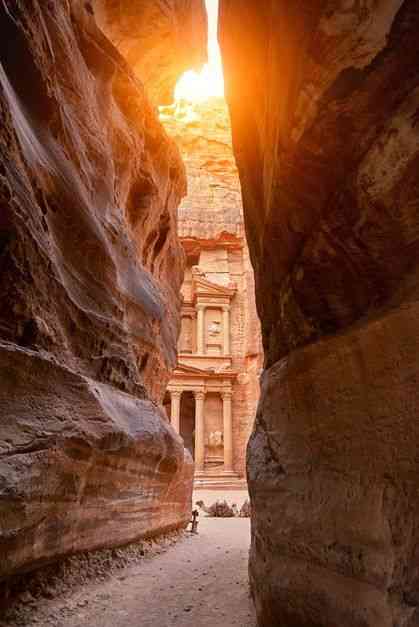
The weather in Petra is desert, it is hot in summer and cold in winter, and the city is experiencing heavy rains in winter, sometimes causing floods.
Population There are no residents in Petra, as it is an archeological and tourist city, where people live in Wadi Musa and the surrounding villages.
History Archaeologists believe that Petra was inhabited in prehistoric times, and in the sixth century BC it was home to the Edomites who excelled in the manufacture of pottery and their interest in sculpture was not the same as that of the Nabataeans who created the Petra sculpture.
Historians unanimously agree that the Nabataeans carved Petra from the rock in a creative way more than two thousand years ago, and it gives an example of the ancient civilization of the Arab Kingdom of the Nabataeans, which historians describe as the most ancient ancient civilizations.
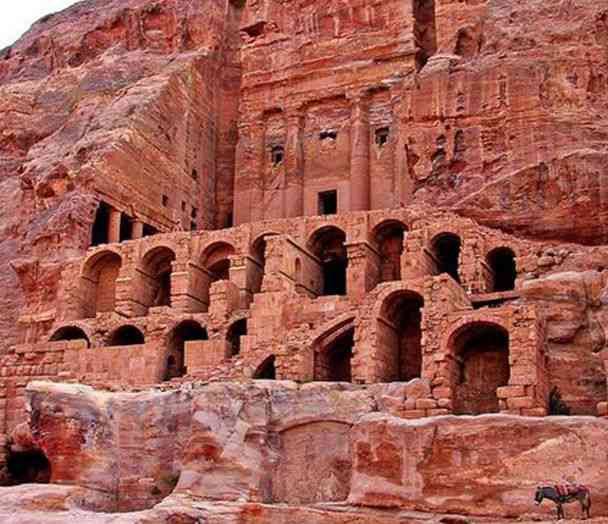
It is noteworthy that the site of Petra remained unknown to the West throughout the Ottoman period, until it was rediscovered by the Swiss orientalist Johann Ludwig Barckhart in 1812 through an expedition in each of the Levant , Egypt and Arabia to the benefit of the British Royal Geographical Society, so many scholars and Orientalists call Petra "the lost city" ".
The Nabataean kingdom flourished and its borders extended south to the northwest of the Arabian Peninsula, where the city of Mada'in Saleh is located. The Nabataeans extended their influence until they reached the shores of the Red Sea, east of the Sinai Peninsula, and the area of the Houran Plain in Syria to the city of Damascus .
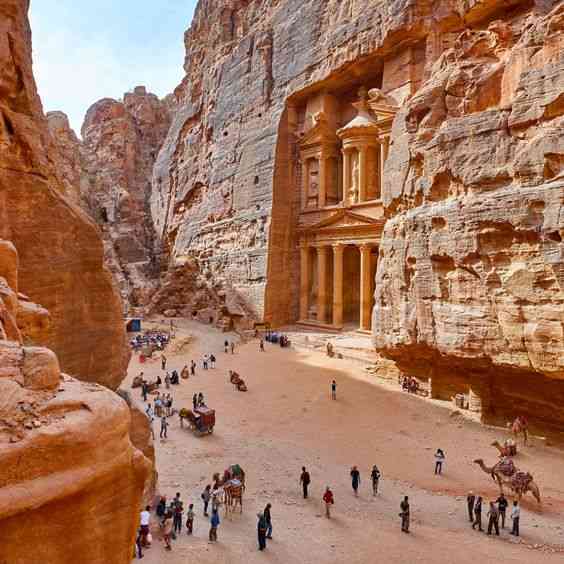
Surrounded by the Nabataean kingdom and its capital, Petra, there are many kingdoms and civilizations, including the Pharaonic civilization in the west, the civilization of Palmyra in the north, and the civilization of Mesopotamia in the east, thus mediating the civilizations of the ancient world, forming a meeting point and connecting between the different civilizations of the world.
The Nabataeans were famous for their techniques of water engineering and restriction, they developed irrigation systems and collected rain water and springs and technicians in building dams and reservoirs that they dug in the rock, they also built channels for long distances, in addition to building agricultural terraces in the slopes to use the lands for agriculture.
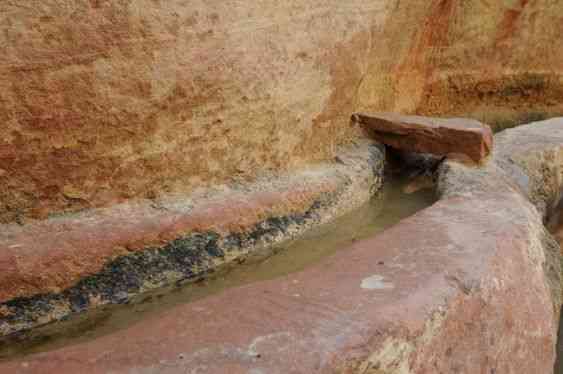
In the modern era, Petra has become Jordan's most prominent tourist and archaeological landmark, and UNESCO included it in the World Heritage List in 1985, to go global and crown in 2007 one of the seven new wonders of the world.
Monuments Petra abounds with archaeological monuments carved by its visitors with its beauty and the accuracy of its sculptures in the mountains. Among the most prominent of these monuments is the "treasury" that was named for this because the local Bedouins believed that the jar above its façade contains a treasure.
The road known as the “Siq” is a prominent landmark in Petra, which is the main road leading to it, and it starts at the dam and ends at the opposite side of the treasury. 80 meters.
Another landmark is the dam, which was built in the place of the ancient dam built by the Nabateans to protect their city from flooding during the winter season, and was rebuilt by the Jordanian government in 1964 in the same Nabatean way.
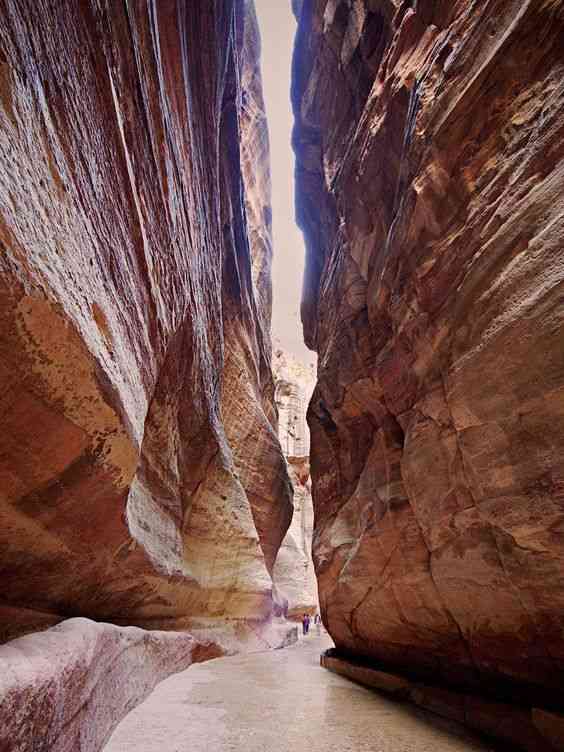
There is the "Tomb of Obelisks", which is one of the unique buildings of Petra, and it consists of two floors, the upper of which dates to the first century BC and consists of a burial chamber and has five graves.
In addition to the tomb of obelisks, there is the silk burial located to the north of the tomb of the Jar. Its construction dates back to the first half of the first century AD, and its width is approximately 11 meters and its height is 19 meters, and its façade contains four columns attached to the wall.
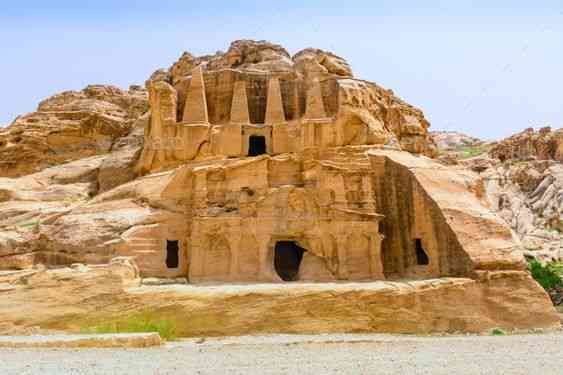
There is also a theater in Petra, located in the heart of the pink city, almost, and its construction dates back to the first century AD. It is built in a circular shape with a diameter of 95 meters and a height of 23 meters, and it is carved in the rock except for the front part of it.
There are other landmarks such as Facade Street, Baptist Street, Sextus Florentinos Cemetery, Caesar Tomb, Corinthian Tomb, Churches, Winged Lions Temple, Big Temple, Pool Building, Gardens, and many other landmarks.
Stay with us.
- Utopia Educators. Do subscribe to stay updated. Thanks

